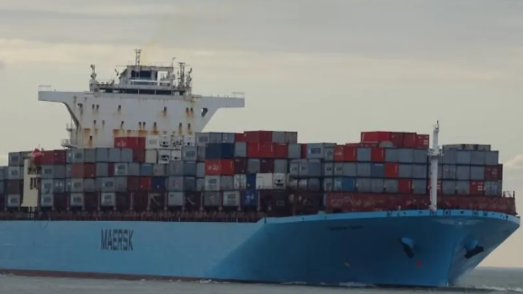Starting Wednesday, the U.S. will impose only a 10% tariff on Chinese products, along with a 20% tariff specifically on fentanyl. In return, China will also reduce its tariffs on U.S. goods to 10%.
China has additionally lifted a number of retaliatory measures, including: the blacklisting of 15 U.S. companies under its export control list, the inclusion of PVH Corp. on its “unreliable entities” list, tariffs on coal, LNG, and crude oil imports from the U.S., investigations into Google, and export restrictions on 25 rare metals.
Since U.S. President Donald Trump returned to office in January, uncertainty has been a hallmark of his administration.
While the new tariff environment is set to last for only 90 days, few observers believe an escalation is imminent. Most industry professionals are relieved by the tariff reductions but remain cautious about what lies ahead.
“I think we’ll see some resolution after the 90-day pause,” said John Manners-Bell, CEO of TI Insights. “As U.S. Treasury Secretary Scott Bessant said, they have a plan, a process, and now a mechanism for better dialogue and negotiation. I don’t know how it ends—only Trump does—but I don’t believe this is just a delay tactic. The mechanism is more formal, and I think the two sides have a good relationship.”
The question now is whether companies feel secure enough to resume booking capacity.
However, according to Manners-Bell, delays in shipments are still likely. Many goods were rushed into the U.S. to avoid tariffs, resulting in strong first-quarter performance for freight forwarders and carriers. But those inventories now need to be digested. He predicts a lull in Q2, followed by a ramp-up ahead of peak season. “No one really knows how this will play out. If the U.S. economy goes into recession, there may be no peak season at all, and high inventory levels will persist longer than expected.”
Indeed, U.S. inventory levels remain high. The National Retail Federation noted last week: “Imports have been high since last summer—first as retailers rushed to beat possible port strikes on the East and Gulf coasts in October, and again after the November elections amid tariff fears. Total imports for 2024 are expected to hit 25.5 million TEU, a 14.7% rise from 2023, and the highest since the pandemic peak of 25.8 million TEU in 2021.”
Analyst Lars Jensen expects a “surge” and added, “A lot of cargo is ready to go. Importers have taken a ‘wait-and-see’ approach over the past month, halting shipments of ready goods. The 90-day pause expires mid-peak season for U.S. holiday imports, so we may see front-loaded shipments creating a shorter, sharper peak season.”
Jensen said carriers may reinstate blanked sailings, though this depends on vessel positioning. “It will hinge on short-term capacity shortages in the Pacific, which may push spot rates higher.”
Xeneta Chief Analyst Peter Sand and Dutch analyst Darron Wedde of Dynamar both said they don’t foresee a Pacific route booking frenzy. Sand noted that 30% tariffs on Chinese imports to the U.S. still remain, and although prices of some goods may start to fall, volumes won’t rise sharply.
Last week, Los Angeles and Long Beach ports expected to receive 199,000 TEU, down 15% from the January-April average of 234,000 TEU, suggesting April’s policy changes are only just beginning to show effect. If volumes don’t decline further, they may stabilize at this level.
Other West Coast ports are also feeling the impact—Seattle Port reported no container vessels called at its terminals last Wednesday, a first since the pandemic began.
With tariff reductions in place, Xeneta expects peak season to arrive earlier than usual, and will monitor demand recovery in the coming weeks.
Additionally, as capacity has been redeployed to other trades, it may take time for vessels to return to the Transpacific market.
Analysts agree that both sides are striking the right tone, offering optimism for future trade talks between the two superpowers.
Some speculate that the U.S. may eventually remove the fentanyl tariff as well, standardizing tariffs on all Chinese goods at 10%.

Last
Maersk Sana Still Adrift After Engine Room Explosion; Ocean Tow on the Way
Maersk has confirmed that the Maersk Sana remains adrift, with a tugboat from Europe expected to arrive “in the coming days.”On Ap

Next
CMA CGM Ermitage Collides with Crane Base in Hamburg
On May 11, CMA CGM’s feeder vessel CMA CGM Ermitage, operating in the Baltic region, was involved in an accident while docking in
